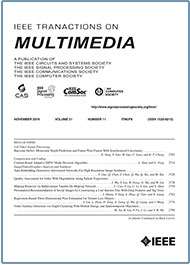Very Low Bitrate Semantic Compression of Airplane Cockpit Screen Content
Top Reasons to Join SPS Today!
1. IEEE Signal Processing Magazine
2. Signal Processing Digital Library*
3. Inside Signal Processing Newsletter
4. SPS Resource Center
5. Career advancement & recognition
6. Discounts on conferences and publications
7. Professional networking
8. Communities for students, young professionals, and women
9. Volunteer opportunities
10. Coming soon! PDH/CEU credits
Click here to learn more.
Very Low Bitrate Semantic Compression of Airplane Cockpit Screen Content
This paper addresses the problem of encoding the video generated by the screen of an airplane cockpit. As other computer screens, cockpit screens consist of computer-generated graphics often atop a natural background. Existing screen content coding schemes fail notably in preserving the readability of textual information at the low bitrates required in avionic applications. We propose a screen coding scheme where textual information is encoded according to the relative semantics rather than in the pixel domain. The encoder localizes textual information, and the semantics of each character are extracted with a convolutional neural network and predictively encoded. Text is then removed via inpainting, and the residual background video is compressed with a standard codec and transmitted to the receiver together with the text semantics. At the decoder side, text is synthesized using the decoded semantics and superimposed over the decoded residual video recovering the original frame. Our proposed scheme offers two key advantages over a semantics-unaware scheme that encodes text in the pixel domain. First, the text readability at the decoder is not compromised by compression artifacts, whereas the relative bitrate is negligible. Second, removal of high-frequency transform coefficients associated with the inpainted text drastically reduces the bitrate of the residual video. Experiments with real cockpit video sequences show BD-rate gains up to 82% and 69% over a reference H.265/HEVC encoder and its screen content coding extension. Moreover, our scheme achieves quasi-errorless character recognition already at very low bitrates, whereas even HEVC-SCC needs at least three or four times more bitrate to achieve a comparable error rate.
SPS ON X
- THIS WEEK: Join NASA’s Dr. Jacqueline Le Moigne as she shares her journey through academia, the private sector, and pivotal roles at NASA, emphasizing her work in signal processing, computer vision, and related technologies. Register now! https://x.com/IEEEsps/status/1785057479606288505
- Join NASA’s Dr. Jacqueline Le Moigne for this interactive webinar as she shares her journey through the realms of signal processing, computer vision, and related technologies, including her pivotal roles at NASA. https://x.com/IEEEsps/status/1782468413551423536
- Great crowd at the Student Job Fair at #ICASSP2024! Thank you to our sponsors for furnishing an exciting, engaging event! https://x.com/IEEEsps/status/1780817453569687559
- Thank you to our Women in Signal Processing Luncheon panelists for their wisdom and insights during today’s event at #ICASSP2024! https://x.com/IEEEsps/status/1780458637338530252
- Free Machine Learning (ML) Lecture Series from IEEE SPS From basics to recent advances, unlock the secrets of ML with Prof. Sergios Theodoridis! https://x.com/IEEEsps/status/1779931297093222415









